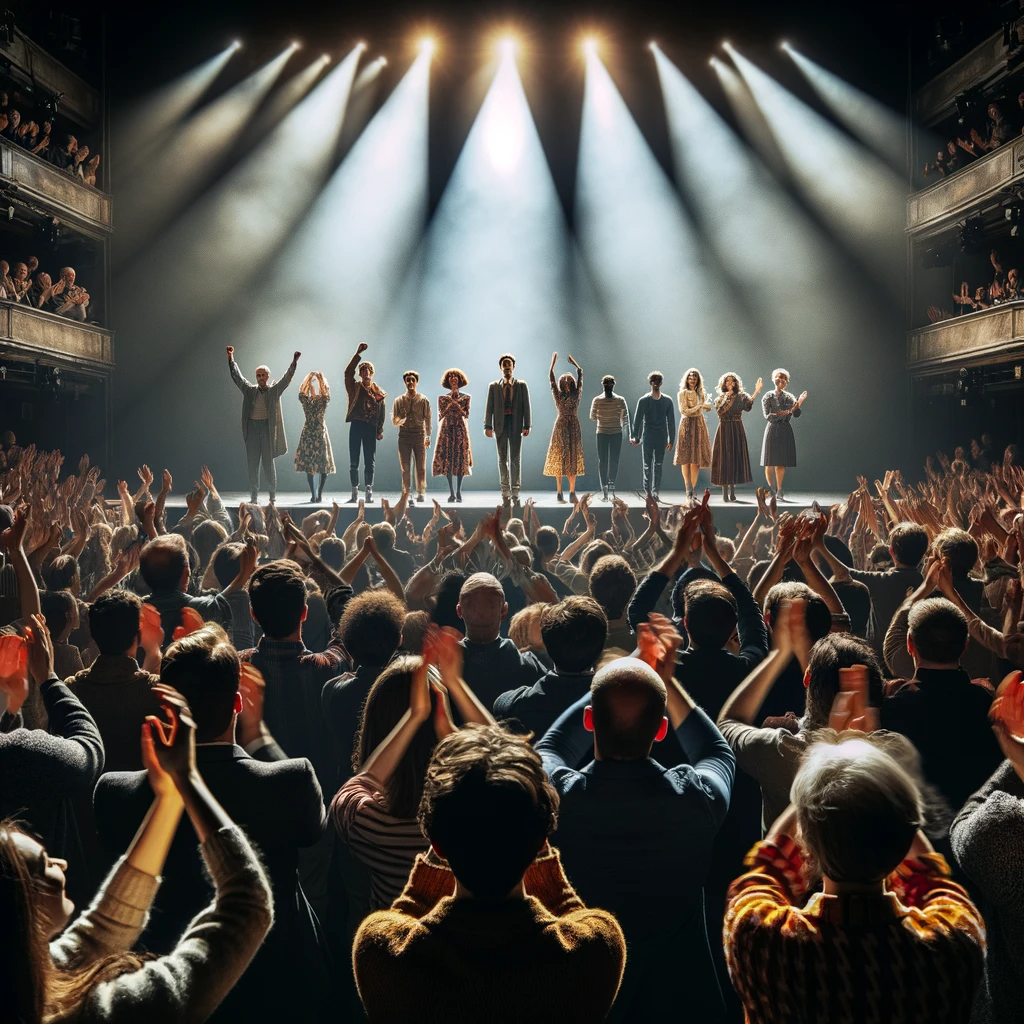The house lights dim, the final line is spoken, and the cast takes their bow. Then, a ripple begins; a solitary clapper graduates to a wave of applause, crescendoing to the ultimate accolade—the standing ovation. This moment, when an audience rises to their feet in unison, is more than a tradition; it’s the resonant endnote of a shared theatrical journey, an expression of collective admiration for the artistry witnessed on stage.
The Anatomy of an Ovation A standing ovation is not merely an act of clapping while standing. It’s an organic reaction, a visceral response to a performance that has touched the heart, stirred the soul, or provoked the mind. Theatre critic Emma Thompson says, “An ovation is the audience’s way of saying, ‘We were moved; we were changed; we are grateful.'”
Beyond Performance: Celebrating the Experience While the performance itself is the catalyst, an ovation celebrates the entire experience—the script that spoke truths, the actors who became more than themselves, the set that transported, and the shared silence and laughter of the crowd. Actor David Lee notes, “When the audience stands, it feels like a recognition of the journey we’ve all taken together, from curtain up to curtain down.”
The Ripple Effect of a Standing Ovation The impact of a standing ovation extends beyond the theatre walls. It’s a story that will be told, a memory that will be cherished, and for some, an inspiration that may stir creativity. “That moment of unanimous applause can ignite a passion for theatre in someone,” shares drama teacher Julia Santos. “It’s a powerful affirmation of the arts.”
Cultural Significance of Applause The tradition of applause has deep roots, dating back to the ancient Greeks, who believed that the clapping of hands could ward off evil spirits. Today, it’s a universal language of approval and a cultural phenomenon that varies from one country to another. In some places, a standing ovation is rare, reserved for the truly exceptional, while in others, it’s a more common gesture of appreciation.
The Performer’s Perspective For performers, a standing ovation is both a dream and a benchmark. It’s a moment of validation for their work and artistry. “It’s exhilarating,” says Broadway star Rachel Kim. “You pour your heart into every performance, and when the audience stands, it’s as if they’re pouring their hearts out in return.”
The Psychology Behind Standing Ovations Psychologists suggest that standing ovations are as much about communal participation as they are about the quality of the performance. There’s a social aspect to it, where one person standing can lead to another, creating a chain reaction. Audience member Mike Johnson observes, “Sometimes you stand because everyone else is standing, but it doesn’t make it any less meaningful. It’s a shared response, a part of being in the audience.”
When Not to Stand The standing ovation is not without its critics. Some argue that it’s become too commonplace, a reflex rather than a genuine response. “We should stand because we can’t help but stand, because we can’t imagine not standing,” says Emma Thompson. “It should remain a spontaneous and rare gift.”
The Lasting Impact A standing ovation is an ephemeral yet indelible part of the theatrical experience. Long after the echoes of applause have faded, the energy of that standing ovation lingers, both for those on the receiving end and for those who stood to deliver it.
In the end, a standing ovation is more than just applause—it’s a communal heartbeat, a shared climax to a collective experience. It’s the audience’s ovation, the performers’ reward, and the theatre’s echo, resonating long after the final bow.
This article explores the significance of the standing ovation in the theatrical experience, examining its impact on performers and audiences alike, and its role as a powerful symbol of appreciation in the world of live performance.


